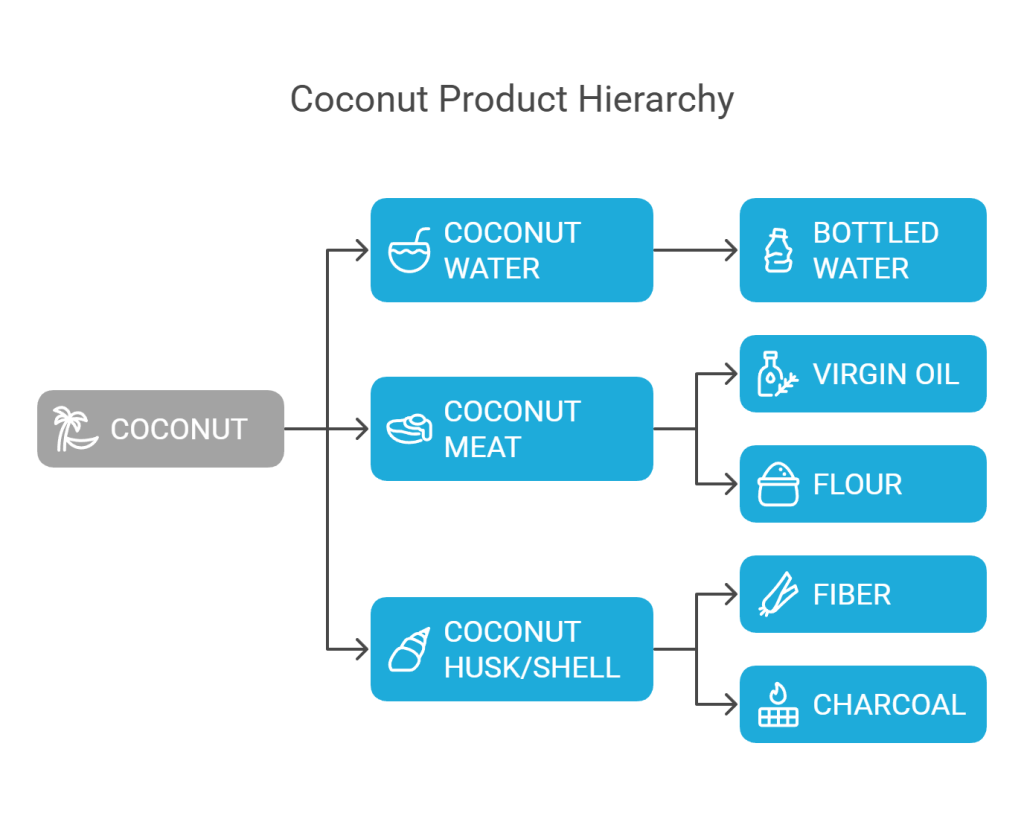In today’s fast-moving business world, your pitch is more than a formality—it’s your first impression, your strategy, and your story. But what if you could supercharge that pitch using AI?
This case study shows how we turned a basic agricultural investment proposal into a fully integrated business plan using AI tools. The transformation didn’t just make the document look better—it reshaped the entire opportunity. If you’re curious about how to apply AI business document creation strategies in your own work, read on.
From Simple Pitch to Strategic Vision
We started with a straightforward pitch: a coconut farm in Mexico, a modest investment, and solid (but unremarkable) returns based on crop yield alone.
But with AI, we turned that flat pitch into a vertically integrated, investor-ready business plan. Instead of just selling coconuts, the revised model explored value-added products—coconut water, oil, and flour—with detailed market pricing, yield projections, and phased implementation timelines.
The result? A jump from a ~27% ROI to a model that projected 40%+ returns, complete with multiple revenue scenarios and strategic expansion options.
The AI Tools Behind the Strategy
Claude for Research and Drafting
We used Claude to structure our research process and draft the pitch document itself. Instead of vague prompting, we asked focused questions like:
- What are the value-added product options from raw coconuts?
- What are average processing costs in Mexico for these products?
- What’s the market demand and pricing in nearby export regions?
Claude gave structured responses we could then iterate on—validating assumptions, refining data, and layering complexity as the business model evolved.
Napkin.ai for Visual Storytelling
To make the pitch more compelling, we built flowcharts showing how a single coconut could branch into multiple revenue paths.
These visuals helped investors grasp the scale of opportunity at a glance—without needing to read a wall of text.
Visit Napkin.ai → https://napkin.ai I make many of my graphics for this website here as well.

How to Use AI for Strategic Document Creation (and Not Just Copywriting)
This process wasn’t about using AI to save time—it was about using AI to think better. Here’s what made the difference:
1. Ask Better Questions
Instead of “How do I make more money from coconuts?”, we asked:
“List all coconut-derived products with their average market value, processing requirements, and feasibility at a small-scale facility in Colima, Mexico.”
This level of specificity gives AI something real to work with.
2. Model Multiple Scenarios
Using Claude, we modeled different paths: a minimal upgrade path, a full integration scenario, and a phased expansion model. This made the pitch appeal to investors across different risk tolerances.
3. Preserve Context Across Sessions
We used project features within Claude to keep the research aligned across documents, which helped avoid contradictions and kept terminology consistent.
4. Structure Like a Strategist
We didn’t just dump data. We used AI to help structure the narrative: starting with the current opportunity, then outlining the improved strategy, and ending with an actionable, phased implementation plan.
Lessons Learned: Best Practices for AI Business Document Creation
Here’s what we’d recommend to any team using AI to build business documents:
- Start with your brain, not the AI’s. AI is a great partner—but only when it’s solving a clearly defined problem.
- Use AI for specifics, not generalities. Ask for prices, output per unit, competitive benchmarks—not just “what’s trending.”
- Visuals matter. Tools like Napkin.ai help turn abstract strategy into something an investor can actually see.
- Keep the human in the loop. The AI may suggest an aggressive expansion—but you still need to ask: “Can we actually pull this off?”
Final Thoughts: AI as Your Business Strategy Sidekick
In the end, we didn’t just upgrade the pitch—we reimagined the business.
By leveraging AI business document creation tools, we turned a decent opportunity into a compelling, investor-ready story—grounded in data, backed by visuals, and strengthened by strategy.
This approach isn’t just for farms. It works for SaaS startups, e-commerce brands, or any business that needs to tell a sharper, smarter story.

